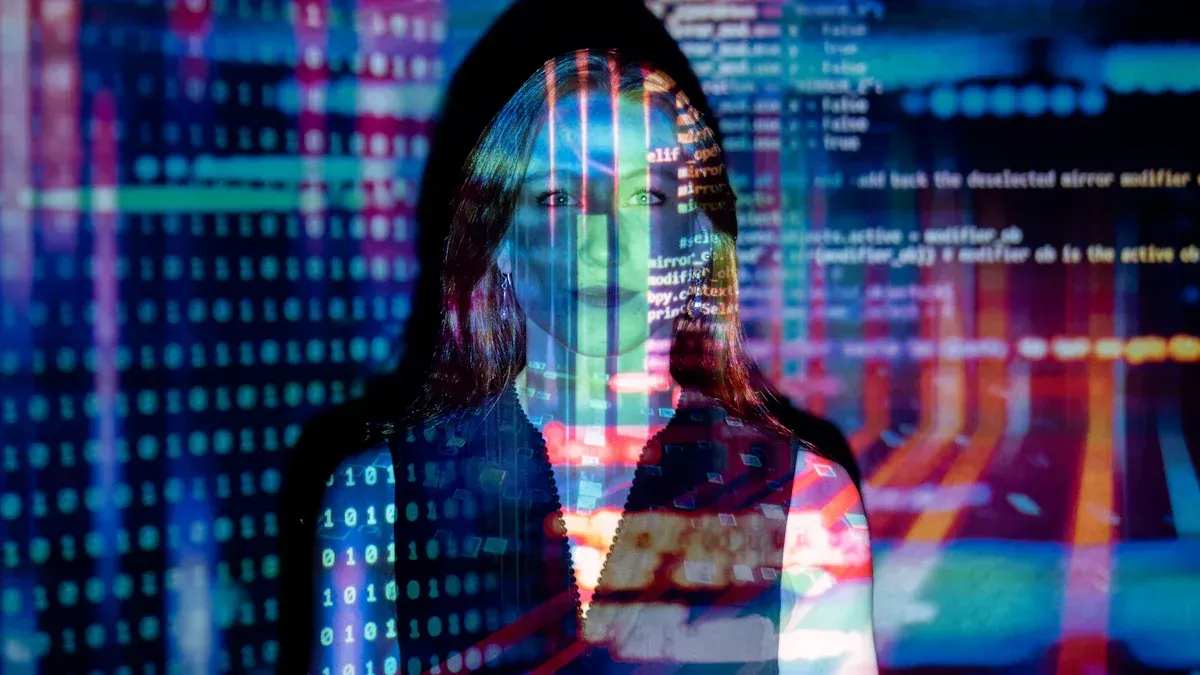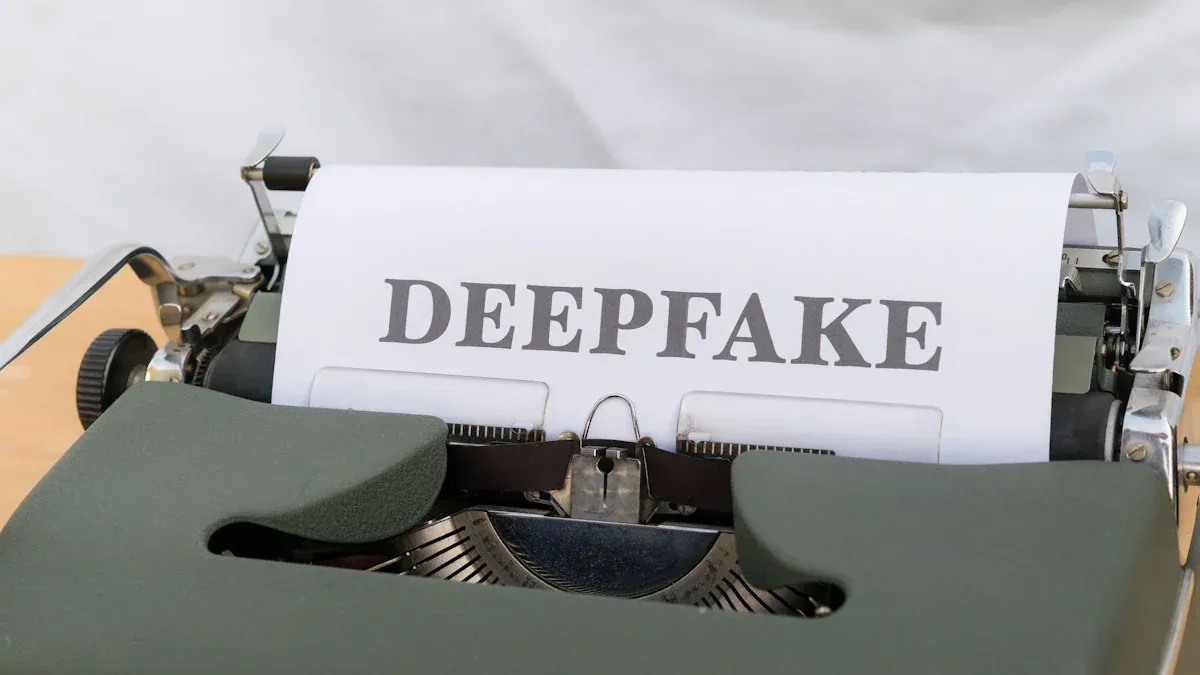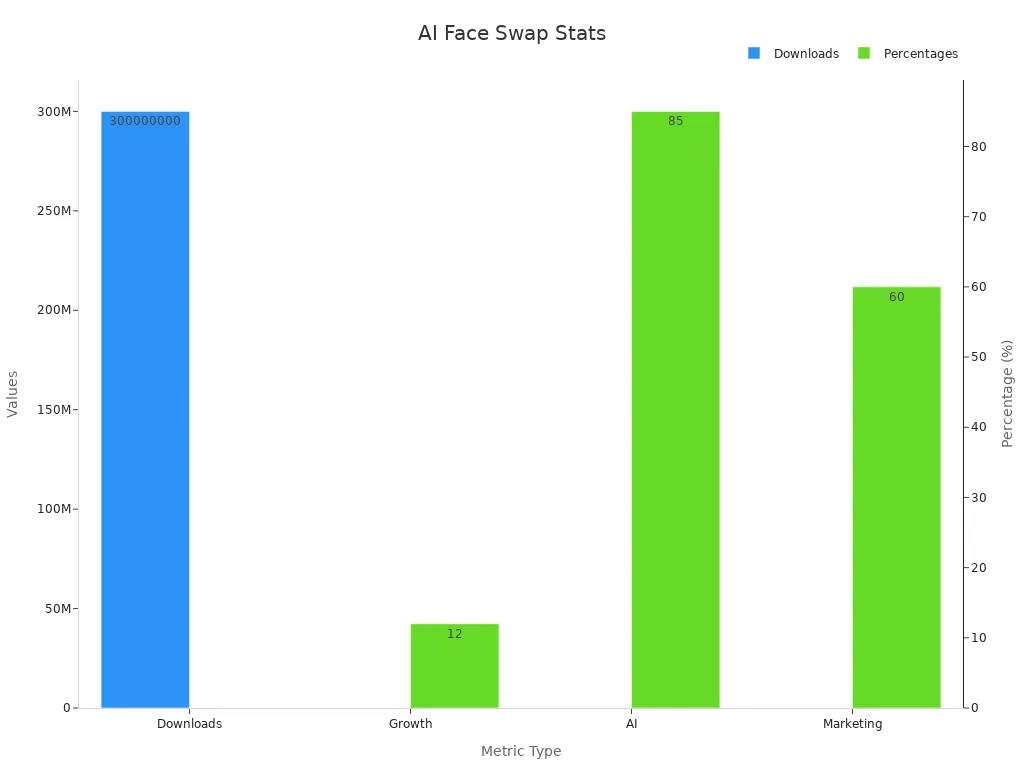The Science Behind AI Video Face Swapping Technology
AI video face swap uses deep learning to replace faces in videos, blending expressions and features for realistic results. Learn how this technology works.

- Alexander Reed
- 14 min read

AI video face swap technology uses smart computers to change one person’s face with another in videos. This cool invention has transformed how we engage with digital content. It helps create fun tools, enhances entertainment, and is beneficial for learning and solving crimes.
The impact of AI video face swap technology is significant. For instance, the market for AI video face swap tools was valued at $1.59 billion in 2023 and is projected to reach $2.3 billion by 2031. The demand for custom content on social media is driving its rapid growth. Understanding how this technology works allows you to appreciate its power and use it effectively.
Key Takeaways
AI video face swapping lets people switch faces in videos. It is used for fun, learning, and making cool content.
This technology is growing fast. By 2031, it may be worth $2.3 billion because people want creative social media posts.
AI face swapping is quicker and cheaper than old methods. It helps filmmakers and advertisers make real-looking effects without spending too much.
Even though it has many good uses, it can cause problems. It raises concerns about privacy and spreading false information. People must use it carefully.
Learning about AI face swapping is very important. It helps people know its dangers and how to use it safely and fairly.
What Is AI Video Face Swapping?
Definition and Key Features
AI face swapping means changing one person’s face with another in a video using artificial intelligence. It uses smart computer programs to make the swapped face look real. This technology is popular in fun videos, social media, and learning because it creates exciting and interactive content.
Main features of face swap technology include:
| Feature | Description |
|---|---|
| Swap and Blend | Matches expressions, skin tones, and textures for smooth changes. |
| Adjustments | Fixes lighting and colors to make swaps look natural. |
| Real-Time Processing | Allows instant face swaps, perfect for live events. |
| Deep Learning Models | Uses GANs and autoencoders to keep faces detailed and realistic. |
| Applications | Used in games, ads, and creative storytelling. |
These features make AI face swapping useful in many industries.
How AI Video Face Swap Differs from Traditional Methods
AI face swapping is faster and easier than older methods. Traditional ways needed costly tools like makeup or actors who looked alike. AI uses machine learning to copy and replace facial features. This makes results more accurate and lifelike.
AI face swapping costs less than CGI, which is very expensive.
Filmmakers can get great results without using hard visual effects.
AI algorithms make swaps look real, unlike older methods that lacked detail.
These differences show why AI face swapping is changing the creative world.
The Role of AI in Face Swapping
AI is the main reason face swapping works. It uses deep learning models like Generative Adversarial Networks (GANs) to study and recreate faces. GANs have two parts: one makes the swapped face, and the other checks if it looks real. This teamwork creates high-quality results.
AI face swapping also helps in education by making history more engaging. In movies, it saves time and money compared to older methods. AI also improves face recognition, helping computer vision grow.
But there are concerns about using AI for face swapping. Changing faces can cause problems with trust and honesty. Tools to detect fake content are important to keep digital content reliable.
How AI Video Face Swapping Works

Image Source: pexels
The Science of Deepfake AI Face Swap
Deepfake technology makes AI face swapping possible. It uses smart computer programs to copy and replace faces. These programs study many pictures of faces to learn expressions and movements.
Tools like DeepFace Lab and MobileFaceSwap make deepfake videos easier to create. DeepFace Lab is great for realistic swaps, like making someone look younger. MobileFaceSwap is simpler and works well for different video projects.
Studies, like “Exploring Deepfake Technology,” explain how GANs help create lifelike swaps. GANs are special AI systems that mix facial features smoothly to make videos look real.
Generative Adversarial Networks (GANs) in Face Swapping
GANs are very important for AI face swapping. They have two parts: one makes fake faces, and the other checks if they look real. This teamwork improves the quality of the swaps.
Advanced GANs, like FSGAN and FSGAN2, make videos look smooth and natural. They focus on matching faces frame by frame and creating clear images. These methods are great for making realistic face swaps.
GANs also fix small details, like matching expressions and movements. This makes the swapped face look more like the original person. GANs are a key part of AI face swapping.
Style Blending and Facial Mapping
Style blending and facial mapping help make face swaps look real. Facial mapping finds important points on the face, like the eyes and mouth. This helps the AI align the faces correctly.
Style blending mixes features from two faces, like shape and color. It keeps the source face’s identity while adding the target face’s expressions.
The Style Blending Module (SBM) improves this process by focusing on important details. It makes the swaps smoother and reduces mistakes. Testing shows this method creates better and more realistic face swaps.
Training AI Models for Face Swapping
Teaching computers to swap faces needs lots of training. This process helps AI understand and recreate human faces in videos. It uses big datasets and smart algorithms to make swaps look real.
High-quality datasets are key for training. These datasets have pictures and videos showing faces in different angles, lighting, and expressions. Examples include Celeb-HQ, VoxCeleb2, and FaceForensics++. But many datasets focus on famous people, not regular folks. To fix this, techniques like flipping or rotating images add variety and improve quality.
AI models use tests to check their performance. These tests see if the swapped face matches the original and looks real. Tools like FaceNet and cosine similarity check identity, while FID (Fréchet Inception Distance) measures realism. Models also compare expressions and features, like eyes, to improve accuracy.
| Aspect | Details |
|---|---|
| Evaluation Methods | Identity checks with FaceNet and cosine similarity, realism tests like FID, and comparing facial expressions and eye landmarks. |
| Dataset Considerations | Need for diverse datasets with clear images, showing various expressions, occlusions, and diversity. Examples: Celeb-HQ, VoxCeleb2, FaceForensics++, FFHQ. |
| Challenges | Datasets often lack variety in expressions or include occlusions like glasses. Many focus on celebrities, not everyday people. Data augmentation helps improve dataset quality. |
Training faces challenges like limited expressions or obstacles like glasses. Advanced methods can improve datasets to solve these issues. This helps AI handle real-world situations better.
By using diverse data and good tests, AI can create smooth and believable face swaps. Training is crucial for making face-swapping technology reliable and high-quality.
Applications of AI Face-Swapping Technology

Image Source: pexels
Entertainment and Media
AI face-swapping has changed how we create entertainment. It helps make realistic face swaps in movies, shows, and ads. Filmmakers use it to replace faces, saving time and money. For example, it can make actors look younger or recreate historical figures. Marketers also use it for creative storytelling in campaigns. Over 60% of agencies now use this technology in projects.
The entertainment industry is growing fast with this tool. By 2025, the market for AI face swaps in videos may reach $143.3 million. By 2033, it could be worth over $1 billion. Better AI and demand for fun content drive this growth. Videos alone bring in about $850 million yearly, showing its big role in media.

Image Source: statics.mylandingpages.co
Education and Training
AI face-swapping is helpful in education. It makes learning fun and interactive. For example, history lessons use it to show historical figures in modern ways. This makes lessons easier to understand. Medical training uses it to show real facial expressions. This helps students learn about emotions and patient behavior.
This technology also helps with contextual learning. It connects students to the past and explains emotions better. This makes hard topics simpler to learn. Teachers can use AI face-swap tools to create exciting lessons. These tools make learning more engaging for students.
| Application | Benefit |
|---|---|
| Medical Training | Shows real facial expressions to help study emotions. |
| Historical Education | Brings historical figures to life for better lessons. |
| Historical Contextualization | Shows history in modern ways to connect with learners. |
Security and Forensics
AI face-swapping is important in security and solving crimes. It helps experts find fake videos and deepfakes. Forensic teams use it to spot mismatched features like hair or neck areas. These clues show if a video was changed.
In security, it helps train officers with realistic scenarios. This improves their skills in spotting threats. But misuse of this technology can cause problems. It’s important to use it responsibly and think about ethics in security work.
Social Media and Content Creation
AI video swap tools have changed how we make social media content. They let you create fun, unique videos that grab attention. Whether you’re an influencer or just for fun, these tools spark creativity.
Social media loves fresh and interactive posts. AI video swap apps let you try new faces and styles. For example, you can look like a celebrity or a historical figure. This makes your posts more fun and shareable. It also helps you connect better with your followers.
People want more creative and personal content. The table below shows how AI video swap tools impact social media:
| Statistic | Explanation |
|---|---|
| Growing Demand for Creative Content | Social media needs exciting posts, and video swap tools deliver. |
| Growing Demand for Personalized Content | Users want unique ways to connect, and these tools help. |
Over 60% of agencies now use video swap tools in ads. This shows how they boost engagement. More than 300 million people have downloaded these apps worldwide. The market is growing fast, with a 12% yearly increase expected from 2023 to 2028.
Tip: Use AI video swap apps to make fun, relatable posts. This boosts engagement and builds trust with your audience.
AI video swap tools help you share ideas in cool ways. They let you make content that your viewers will remember.
Challenges and Ethical Implications
Risks of Misinformation and Deepfake AI Face Swap
AI face-swapping can spread false information and cause harm. Deepfakes use smart AI to change videos, making people seem to say or do fake things. This has hurt reputations and invaded privacy. For example, deepfakes have been used to create fake news and trick voters during elections. These tools are cheap and hard to detect, making the problem worse.
There are also ethical problems with deepfakes and fake videos. They can trick people and cause confusion, leading to distrust. It’s important to create tools that can find and stop misuse. Without these protections, the risks of harm will keep growing.
Privacy and Consent Concerns
Using someone’s face without asking is a big privacy issue. AI face-swapping can misuse photos, causing identity theft or damage to reputations. For example, people have used face swaps to make harmful or offensive content, like fake political videos or inappropriate images.
Developers must focus on getting clear permission before using someone’s image. Using faces without consent breaks privacy rules and can lead to legal trouble. This includes copyright issues or defamation claims. To use this technology responsibly, we must respect people’s rights and follow ethical guidelines.
Technical Limitations of AI Face-Swapping Technology
AI face-swapping still has technical problems. Sometimes, the swapped faces don’t look real because of poor image quality. It’s also hard to make swaps work smoothly in live videos. The technology needs lots of data to work well, but it struggles when there isn’t enough variety in the data.
These problems show that AI face-swapping still needs improvement. While it has come far, it doesn’t always give perfect results. Fixing these issues is important for making the technology better and more useful in the future.
Legal and Regulatory Challenges
AI video swap tools face many legal and rule-based problems. These happen because the technology often works in unclear legal areas. This creates problems for governments, companies, and people.
One big issue is about ethics. Video swaps can spread lies or be used to harm others. For example, deepfakes have been used to pretend to be someone else, hurting their reputation. Fake videos have tricked people during elections or spread false stories. These examples show why stricter rules are needed to stop misuse.
Another problem is unclear laws. Different places have different rules, making it hard to create global standards. Some countries have strong laws against deepfakes, but others don’t. This makes it tricky to control the technology everywhere.
Privacy and consent are also big legal concerns. Using someone’s face without asking can break copyright laws or lead to defamation. Imagine if someone made a fake video of you without your permission. It could harm your reputation and break your rights. Developers need to get clear permission to avoid these legal problems.
| Challenge Type | Description |
|---|---|
| Ethical concerns | Spreading lies or harmful use of deepfake tools. |
| Regulatory uncertainties | Different rules in places make global control hard. |
| Legal dilemmas | Using faces without asking can cause legal trouble. |
Note: Using someone’s image without asking is both wrong and risky. It can lead to legal problems. Always respect privacy and get permission before using video swap tools.
To solve these problems, governments and groups must work together. Clear rules, ethical practices, and smart detection tools can help. By knowing these issues, you can see why balancing new ideas with responsibility is so important.
The Future of AI Video Face Swapping
Advancements in AI Face-Swapping Technology
AI face swapping is improving quickly with exciting new features. Developers are working to make swaps look more real and easier to use. Tools now include instant processing and better blending methods. These upgrades help create smooth swaps with little effort. The technology works with many formats, making it useful for different tasks.
The market for AI face swap tools is growing fast. Experts say it could make over $500 million yearly soon. Companies are adding simple designs so more people can try these tools. In movies, AI face swapping lowers costs by replacing expensive effects. Filmmakers use it to fix scenes or match lips for dubbing languages. These changes show how AI face swapping is helping creative industries grow.
| Aspect | Details |
|---|---|
| Market Characteristics | Mix of big companies and smaller specialized ones. |
| Innovation | Improvements in realism, ease of use, and features like emotion matching and video smoothing. |
| Market Valuation Forecast | Could reach hundreds of millions in the next five years. |
Ethical Responsibility in Innovation
As AI face swapping improves, using it responsibly is very important. You should always think about privacy and get permission before using someone’s face. Misusing this tool can spread lies or cause harm. For example, deepfakes have been used to share fake stories, hurting trust in media.
Both developers and users must act responsibly. Tools like watermarks and fake-detection systems can stop misuse. By protecting privacy and safety, you help make the digital world safer. Ethical use ensures AI face swapping helps people without breaking their rights.
Public Awareness and Education
Teaching people about AI face swapping is very important. Many don’t know what it can do or the risks it brings. Learning how it works helps you spot fake videos and stay safe online. Campaigns can explain why privacy and consent matter.
Schools and groups can teach how to use AI tools responsibly. When you understand the ethical issues, you can handle digital challenges better. Education builds responsibility, making sure AI face swapping stays helpful and safe for everyone.
AI video swap tools use smart technology to make lifelike digital content. They are useful in fun, learning, and safety areas. But deepfakes and fake news can cause problems. These issues make it hard to trust what is real online.
To use this technology fairly, safety steps are needed. Tech companies, governments, and groups should work together. They can create rules to balance new ideas with responsibility. By knowing these challenges, you can see the good in AI and help it grow responsibly.
FAQ
What makes AI video swap different from deepfake technology?
AI video swap changes one face with another in videos. It’s used for fun or practical tasks. Deepfake technology, a type of AI video swap, creates very real-looking fake videos. These are sometimes used in harmful ways. Both use AI, but they have different purposes.
Can AI video swap tools work during live streaming?
Yes, some tools can swap faces in live streams. They use quick processing and facial mapping for smooth changes. But the quality depends on your device and internet speed.
Are AI video swap tools safe to use?
They are safe if you use them carefully. Always ask permission before using someone’s face. Don’t share private or sensitive content. Use trusted platforms to avoid risks like stolen data or privacy issues.
How can you tell if a video is fake?
Check for odd lighting, strange movements, or blurry face edges. You can also use tools made to detect deepfakes. Learning about AI helps you spot fake videos better.
Do you need special skills to use AI video swap tools?
Not really. Many tools are easy to use and beginner-friendly. They often include guides or templates to help you. Advanced features might need some knowledge, but most swaps are simple to make.
Tip: Try free apps first to learn before using advanced tools.
- Tags:
- Video Face Swap